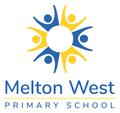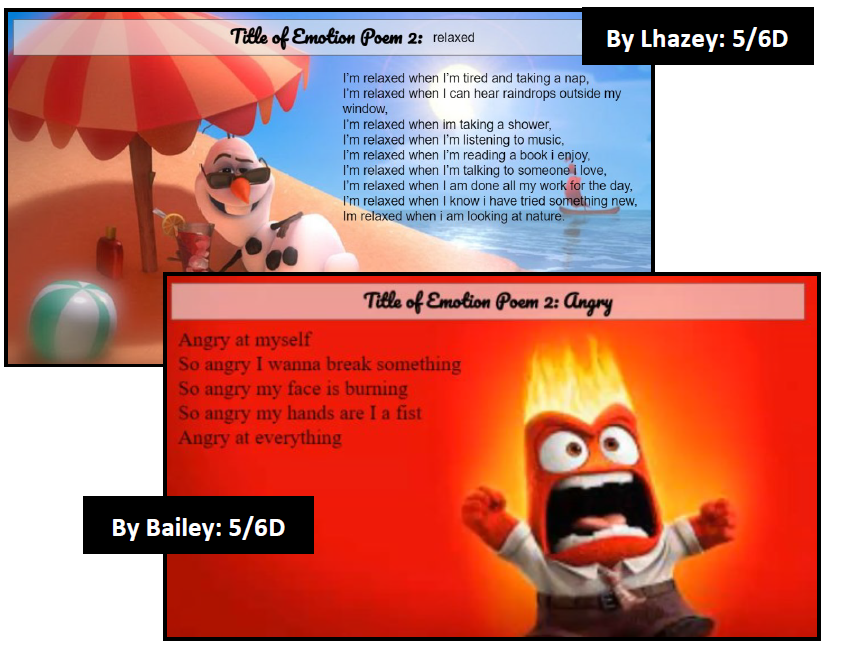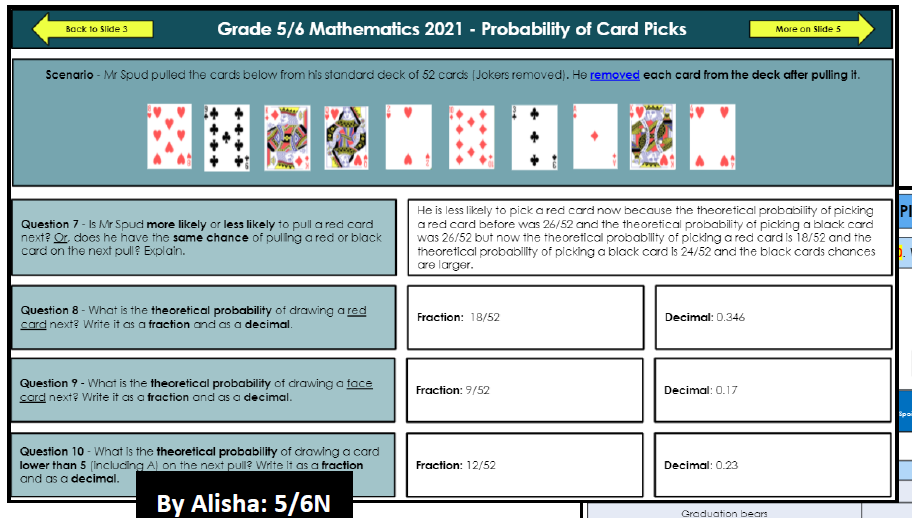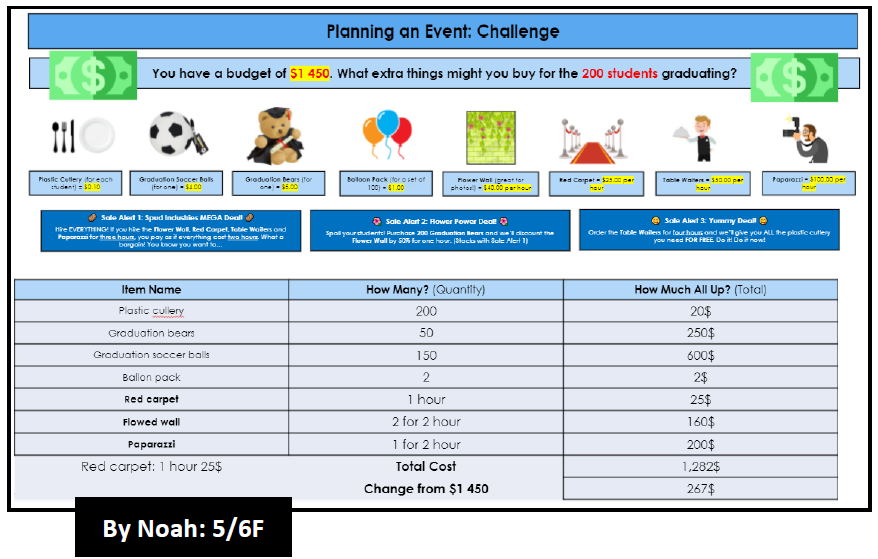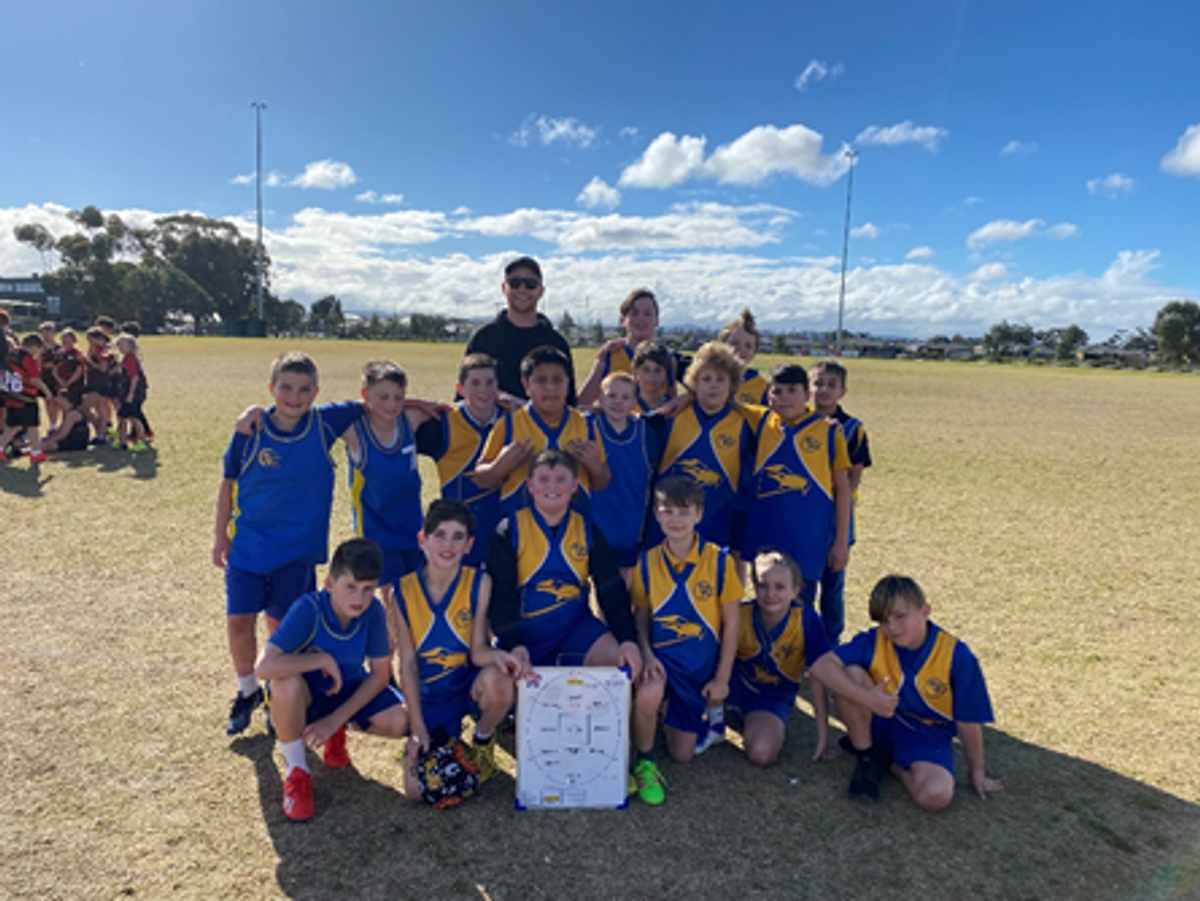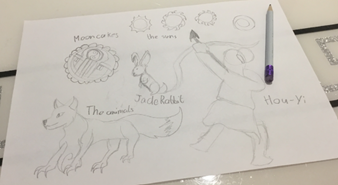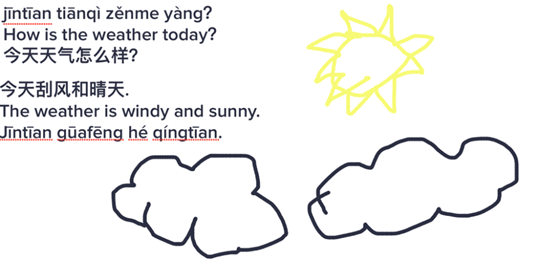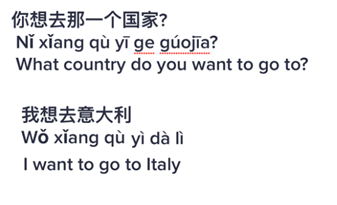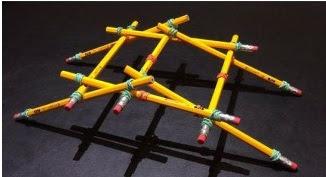Year 5/6

READING
In Reading, students spent time on site and during remote learning on how to summarise texts effectively, using written and oral strategies. Students learned how to use the ‘5 W’s and 1 H’ (who, what, where, when, why, how) to summarise fiction and non-fiction texts. They learned how to turn these 5 W’s and 1 H into a concise paragraph. Students were afforded time to work with their teacher in mini-lessons and breakout rooms to consolidate and extend their skills in summarising.
Students spent the latter part of this term during remote learning, on how to synthesise information between texts. ‘Synthesising’ refers to combining prior knowledge with new knowledge to create new understandings. Students worked in collaborative groups in breakout rooms on Webex to share and learn new knowledge.
WRITING
In Writing, students have spent time on site and during remote learning on creating narratives. Initially, students revised how to plan and draft a narrative using the typical structure—orientation, problem, resolution, conclusion. Students then investigated other ways to structure a narrative with plot devices, including incorporating mini-problems and mini-resolutions, cliff-hangers, flashbacks, and flash-forwards.
Later in the term, students spent time investigating poetry. Students have learnt how to create different types of poems, from haikus, tankas, emotion poems, free verse, and ballads. Students are currently in the process of creating a poetry anthology during remote learning.
MATHEMATICS
In Mathematics, the major topic we investigated was fractions and decimals. During on-site learning, students learned how to do paper folds up to tenths and annotating them with number lines. Students compiled a ‘fraction folder’ with all the fractions they created. During remote learning, students then applied this knowledge to learning about equivalent fractions, improper fractions, mixed numbers, decimals and percentages. Students then engaged in probability investigations and applied their knowledge of fractions in calculating experimental and theoretical probabilities with coin flips, dice rolls and other experiments.
Students then conclude the term with mini-units on financial mathematics and statistics. In financial mathematics, students undertook a range of tasks involving various skills, including calculating change and planning a budget using various scenarios. Finally, in statistics, students are investigating how to use and interpret data in different ways, and knowing when and how to use the most appropriate graphs to visualise a particular set of data.
INQUIRY
During Inquiry this term, we began learning about the Stolen Generation. We have started exploring some of the policies and practices that enabled authorities to remove Aboriginal children from their families and communities, as well as, how the removal of Aboriginal children by authorities affected individuals, their families and communities.
Students have showed good engagement during Inquiry, contributing to discussion during the movie, The Rabbit Proof Fence, and have contributed wonderings to investigate later in the Inquiry.
I look forward to continuing this Inquiry when we come back to school!
ART
At the beginning of this term, grade 5-6 students were onsite and had the opportunity to make full use of the art room during those early weeks. They finished off their beautiful, “Sunset over water” reflection pieces, which demonstrated the warm and cool colour palette, Keith Haring Subway Art, and POP Art, (See below wall images).
Once we returned to online learning, students have had the opportunity to carry out their Art tasks on ‘Google classroom’. The focus of online learning for art has been about designing with lines. Lines can be used to separate, organize, emphasize, or provide a framework for the page’. Alone or as part of another graphic element, lines create patterns, set a mood, provide visual texture, create movement, and define shapes.
The Grade 5-6 students have also been exploring and using the following line drawing techniques, during their online learning:
Anime Art: The anime art form, having originated in Japan in the early 1900s, is a uniquely stylized form of two-and three-dimensional illustration using lines and animation.
Zentangle Art: Zentangle is an American method for drawing, which not only promotes concentration and creativity but at the same time increases personal well-being.
Mandala Art: Mandala was first produced in India during the first century B.C. The mandala is a diagram, chart or geometric pattern that also promotes repetition, calm and mindfulness.
PE
Grade 5&6 cohort were fantastic to work with throughout term 3. Although we were very limited in interschool sports and also with Athletics Carnival amongst other activities having been postponed, it was great to have the AFL, Netball & Tee ball teams compete early in the term against other schools in our region. Even better the Girls Tee ball team were able to bring home a runners-up flag! So proud of you all. At school we were able to get through the majority of our Australian Rules Football unit where we were able to extend our knowledge on the game of AFL and really develop the skills associated with the game such as kicking, handballing and marking when we are playing a modified game which was great to watch. Term 3 had us learning a lot online where students were given the opportunity to participate in numerous at home activities such as mini workouts, skill related activities and just getting outside to get moving! I am looking forward to seeing you all again very soon for our final term of PE together and for some of you, your final term of PE as a primary school student!
LOTE-Chinese
In term 3, whilst onsite, students in years five and six learnt to create a short text to describe the current weather. They learnt new vocabulary for topics including weather and countries. The students used Chinese to create a dialogue to ask peers, “which country do you come from?” They used Chinese to respond to the teacher’s questions, e.g. “Which country would you like to go to?” During remote learning, students were provided with the opportunity to engage in cultural and language activities. The students practised some Chinese character writing and read some Chinese folklore stories, such as The Moon Festival, The Magic Pot and the Zodiac Animal Race. Well done everyone for showing such resilience and perseverance in term 3!
STEM
It has been a tumultuous term 3 however, the Grade 5/6’s have persevered and created some fantastic work. They have not only created a protective covering for an egg drop challenge using the design process but have looked at the engineering aspects of parachutes and bridge design. These tasks involved utilising the five design phases (problem, brainstorming, plan, create, redesign/improve) to assist in completing a finished engineering product. It has been a strange term with more remote learning, but you’ve all done a great job - I hope you enjoy the September holidays!
